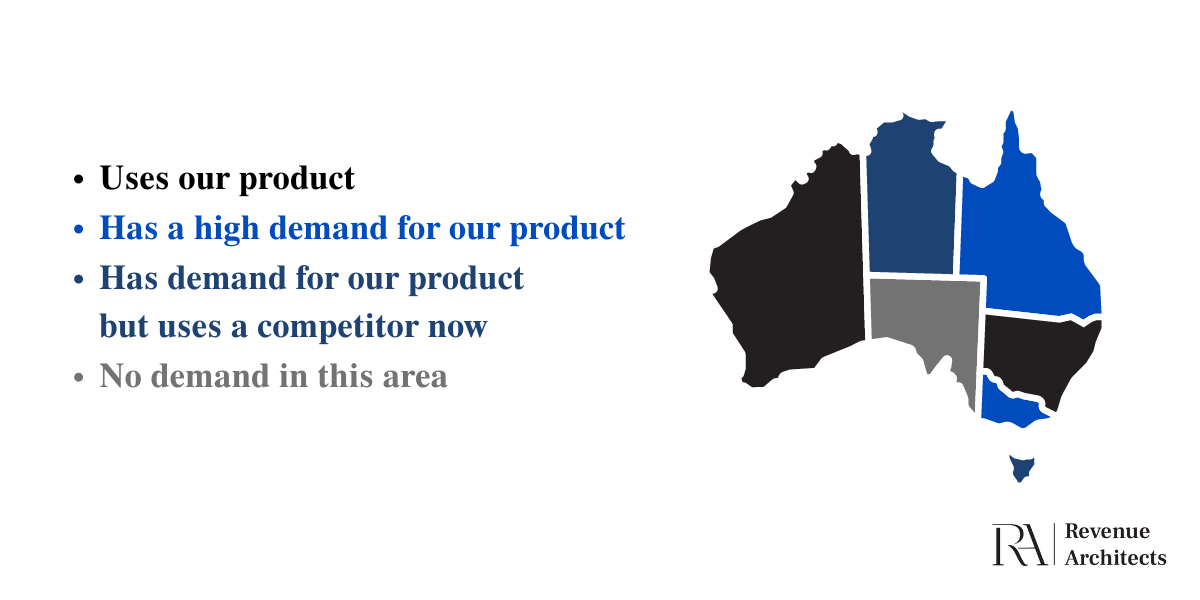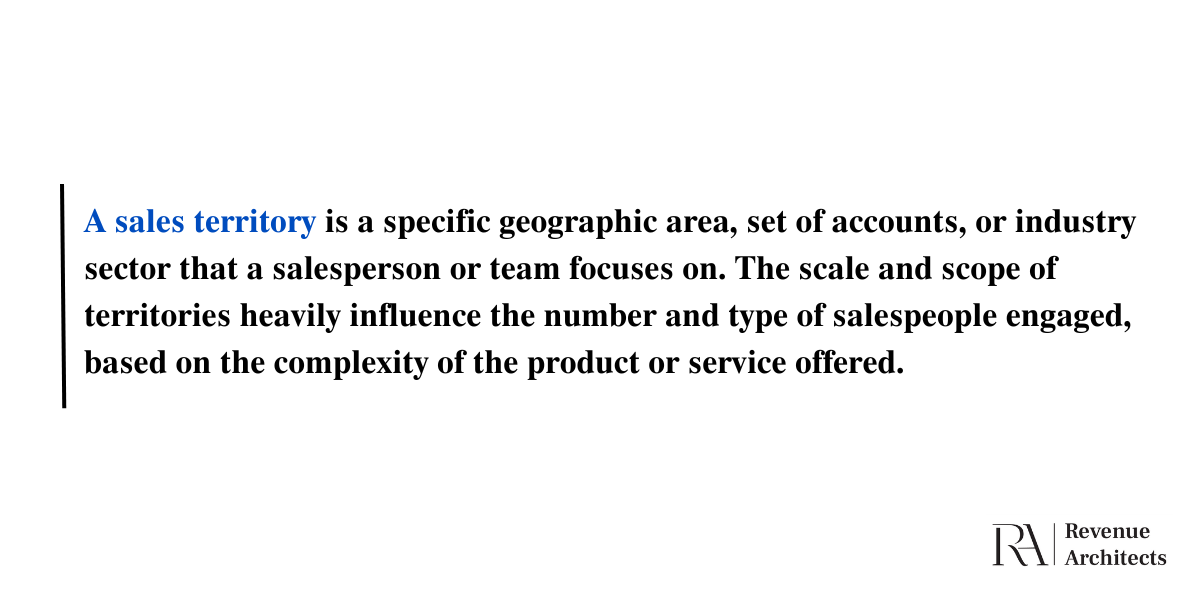Mastering Territory Planning for Sales Success

As a sales professional, your territory is more than just a geographical area; it’s the home of your business empire. So your sales manager has tasked you with creating a territory plan, but you may wonder, “Why do I need a territory plan?” This question is not uncommon, and you might be thinking, “I’m already busy with my sales targets, why do I need to add another task to my plate?” However, the answer is multifaceted and compelling, and it’s worth the investment of your time and effort.
Let’s embark on a journey to discover the crucial reasons for developing a territory plan. We’ll delve into the intricacies of creating an impactful plan that can elevate your sales journey. Get ready to equip yourself with the knowledge and tools to develop effective territory plans that maximize sales performance and success.
Why Do I Need a Territory Plan?
First and foremost, having a territory plan empowers you to control the outcome of your territory. Think of your territory as your business. Effective planning helps you manage your earning potential and maximize your results. A well-crafted territory plan provides focus and productivity, helping you achieve your sales goals efficiently.

A territory plan is a blueprint that guides your actions and decisions, ensuring every move is strategic and aligned with your objectives. It also helps you anticipate challenges and prepare for them. By identifying potential obstacles early and devising strategies to overcome them, you can stay proactive. This approach boosts your confidence and demonstrates your commitment to your sales manager and team.
The Territory Planning Process
You need to follow a structured process to create a successful territory plan. Begin with understanding your objectives. What are your revenue, profit, and growth targets?
Dissect your market and chunk it down into manageable pieces. Define and align all available resources to cover your patch effectively. Assign quantifiable segment targets (age, gender, company size, etc) and ensure they map to your overall full-year objectives.
Introduce adequate contingency planning to navigate any unforeseen challenges. Understanding your objectives involves more than knowing your targets. It requires a deep dive into your business’s underlying drivers. Analyze past performance data to identify trends and patterns.
Look at what worked and what didn’t in previous years. This analysis will provide valuable insights to inform your strategy and help you set realistic yet ambitious goals.

Where Do I Start?
Starting with territory planning can feel overwhelming, but breaking it down into clear steps makes it more manageable.
- Understand your business objectives and quotas, including other quantifiable objectives or KPIs.
- Ask for a history or trend line from the last three years to gain insights into past performance. This historical data is crucial for setting realistic targets and understanding market trends.
- Define your territory and market. Where possible, create customer segments by industry, geography, or size. Developing a coverage strategy is essential, so clearly understand what resources you have available to cover the patch. You must know their business objectives and KPIs to leverage these resources effectively.
- Segmenting your territory allows you to tailor your approach to different customer groups. For example, small businesses value speed and flexibility as they often have limited resources. On the other hand, enterprise businesses value stability, security, scalability, and compliance with industry standards.
By understanding these differences, you can develop targeted strategies that resonate with each segment, improving your chances of success.
Creating a Business Plan for Each Customer Segment
With your territory defined and segmented, creating a business plan for each segment needs time. Establish quantifiable targets for each segment, focusing on revenue, gross profit, and growth. Map these segment targets to your full-year quota, ensuring they contribute to your overall goals.
Salespeople are naturally optimistic, but things can go wrong, and plans must adapt to changes. Build a level of flexibility into your plan to respond to unexpected shifts in the market or resource availability.
When creating business plans for each segment, consider each group’s unique characteristics and needs. For instance, technology companies prioritize innovation and speed to market, while manufacturing firms focus on cost efficiency and reliability. Tailoring your approach to these specific needs will make your pitch more compelling and increase your chances of closing deals.
Understanding Your Business Objectives
A deep understanding of your business objectives is the cornerstone of an effective territory plan. Analyze historical trends to see what your territory achieved last year and how fast the market and your territory are growing. Allocate targets by crucial account and segment, considering significant revenue sources such as products, services, and recurring contracts.
Additionally, assess your market share relative to the competition. Track recent shifts, understand the entry of new competitors, and be prepared to defend your market position.
Remember, your hardest sell will often be to your sales manager, so make sure your plan is robust and well-justified. Understanding your business objectives also involves recognizing the broader market dynamics.
Are there emerging trends that could impact your territory?
Are there new technologies or regulations that could create opportunities or pose threats? Staying informed about these external factors will help you stay ahead of the curve and make informed decisions.
Territory Definition – You Need One
Clarifying your territory by defining market segments is crucial. Break it into manageable, bite-sized chunks and create work units with quantifiable objectives. Profile your market, looking for common industry, geography, or size threads. Identify and map the industry influencers, including consultants, application providers, and competitors.
Prioritize these segments using the Vilfredo Pareto 80:20 rule to focus on the most lucrative opportunities. Determine which segments are growth segments and which require more investment for a better return. Start thinking about a plan to gain support for necessary investments.

Focusing on high-potential segments can maximize your impact and achieve better results, and it can help you avoid losing time on those that just don’t work.
Developing a Coverage Strategy
Developing a coverage strategy involves establishing your “territory” team internally and externally. Your team might include pre-sales personnel, architects, management, executives, business partners, application providers, and other influencers. Assess resource bandwidth regarding capacity, capability, expertise, and attitude.
Define roles and responsibilities clearly and agree on segments and objectives. Establish a communication and reporting process detailing when and how often updates will occur and who will be involved. Map team resources to your defined market segments and ensure you have buy-in from the team. Clear and frequent communication is vital, so provide the team with regular updates to keep everyone aligned and motivated.
Effective coverage strategies require collaboration and coordination. You can develop a comprehensive plan addressing all aspects of the sales process by working closely with your team and leveraging their expertise. Regular communication and feedback loops will ensure everyone is on the same page and working towards the same goals.
Here is a simplified example of a territory map.
Segment Business Plans
Establish quantifiable targets based on opportunity size for each of your market segments so you can prepare successful discovery calls. These targets should be Specific, Measurable, Achievable, Relevant, and Time-bound (SMART). Align resources to each segment and map the skills required for each. Leverage your manager and existing relationships to support your plans and identify gaps.
Map discrete segment targets to your overall full-year number. The sum of your segment targets should exceed your full-year target to provide a buffer for any shortfalls. If not, revisit your plan and adjust accordingly. Create a gap plan to bridge any discrepancies in target coverage, skills, or accountability.
When setting targets, consider each segment’s short-term and long-term potential. Some segments offer immediate opportunities, while others require more time and investment. By balancing your efforts across different segments, you can build a sustainable pipeline of opportunities and ensure consistent growth.
Building Flexibility into Your Plan
Flexibility in your territory plan is essential. You must respond quickly and appropriately to resource changes, competitive forces, and market variability. What if your key pre-sales person is promoted? How will you set competitive traps and create sales cycles yourself? Diversify and balance your territory to mitigate risks and ensure you have contingency plans.
Contingency planning involves thinking ahead and preparing for various scenarios. Identify potential risks and develop strategies to mitigate them. This could involve cross-training team members, establishing backup plans for key accounts, or diversifying your customer base to reduce dependency on a few large clients.
Recap and Final Thoughts
Mastering territory planning involves understanding your objectives, dissecting your market, and breaking it into manageable chunks. Define and align all available resources, assign quantifiable segment targets, and ensure they map to your full-year objectives. Introduce adequate contingency planning to navigate challenges effectively.
Territory planning is not just a task; it’s a strategic approach to owning your business and maximizing your earning potential. By following these steps, you can create a robust territory plan that drives success and keeps you ahead of the competition.
For personalized advice tailored to your industry, don’t hesitate to contact our experts. We can help you develop a customized territory plan that meets your specific needs and objectives. Let us help you take your sales strategy to the next level.

